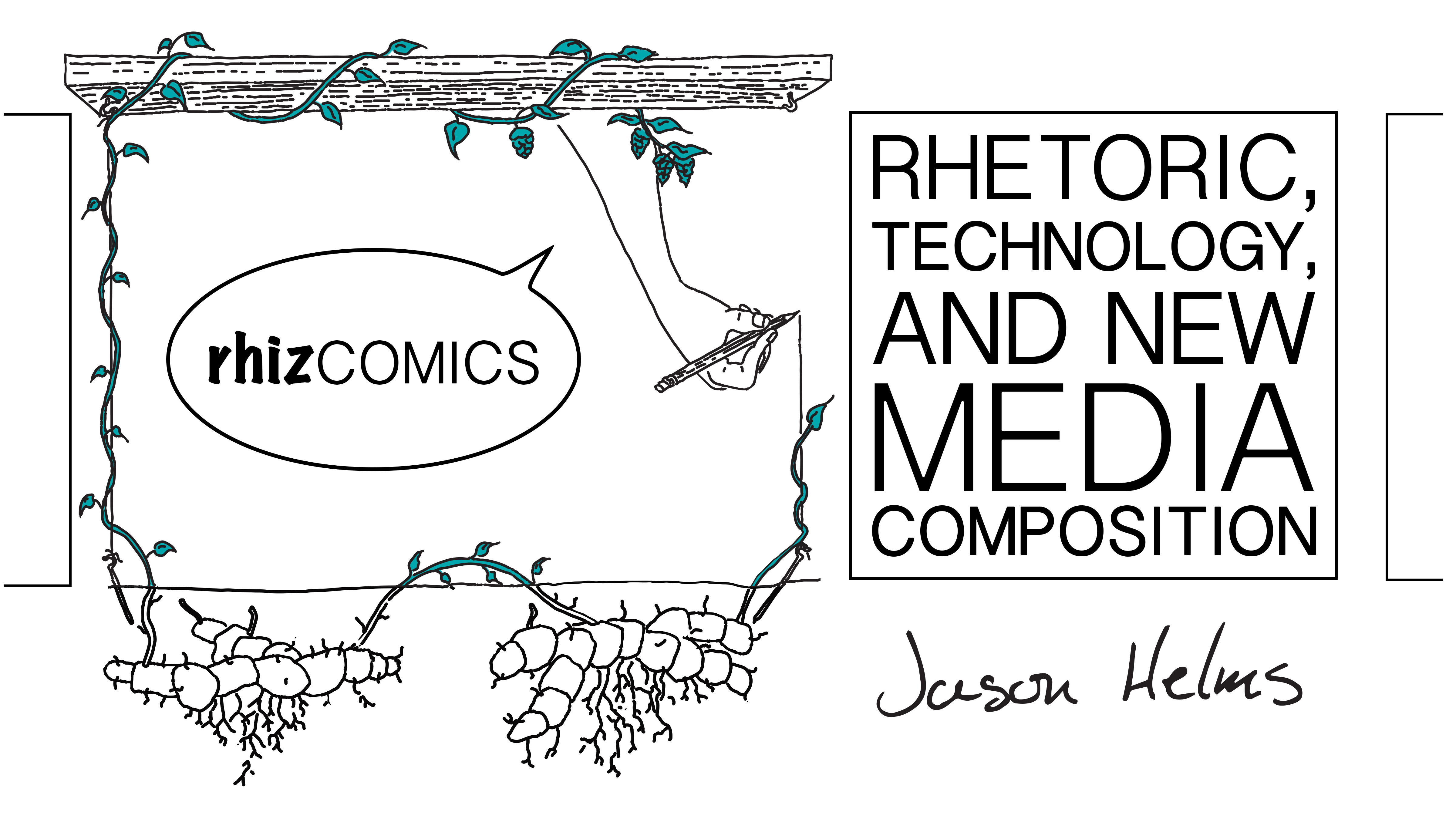In January of 2008 I was in a research seminar at Clemson University trying desperately to come up with a research idea. My advisor Victor Vitanza had shot down my last three attempts, but I knew I was getting closer. It had to do with media studies, rhetorical theory, and visual rhetoric. I was particularly interested in comics.
“That’s not an argument,” Victor sternly replied to my most recent attempt to formulate my thoughts. “You’re just arguing that comics are worthy of study. That’s not up for debate. Get more specific. Make an argument.”
He stared right into me, willing me to fail—or maybe that was just my interpretation of his stare.
“Um . . . scholarly arguments about comics should occur in comics format?” I offered sheepishly.
“That’s an argument,” Victor informed me with a modicum of approval. “Now. Can you draw?”
“. . . No?”
Two years, some drawing classes, and a whole lot of practice later I had created a multimedia dissertation that oscillated back and forth between comics and traditional scholarly forms. My dissertation formed the core of what would become Rhizcomics almost a decade after that research seminar. Portions of the dissertation made their ways into two chapters, “Toward a Decentered Conceptualization of Comics” and “Heterotopia,” though altered drastically from their original form.

As the media and genres changed from a print dissertation to a digital monograph, the arguments changed as well. Screens provide a different kind and amount of real estate for images, in addition to the various affordances of which the printed page is incapable (animation, infinite length, hyperlinking, etc.). Still, the biggest change was in terms of organization. Despite its theoretical interest in non-linear rhizomes without hierarchy, my dissertation was all too linear.
Rhizcomics is anything but linear. Even the first page is just one of many starting places (Greg Ulmer’s foreword and the front matter would be equally good places to start). That said, it’s probably a pretty good entry point as it offers instructions on how exactly one might read this digital monograph. From there, I would encourage new readers to continue through the introduction to pick out some of the major arguments. Next, one might jump to the conclusion to see how things end up or follow one of the many internal links from the introduction into a distant page. Of course, a reader could always just keep clicking “next” at the bottom of each page.
The medium in which scholarship appears shapes its arguments. Rhizcomics investigates some of those ways very closely, paying particular attention to the ways that visual and textual elements can be combined to make arguments that neither mode would be capable of on its own. A good example here is “Opposition and Difference: Toward a Critical Poetry” which makes perhaps the clearest argument in RHizcomics for creative visual interventions in scholarship. That page begins with text and image juxtaposed across a margin—a fairly clean separation between the two modes. By about midway down the page, the image and text have combined into a comic. As they begin to separate, the images come more and more to operate like text and the text like images, as though the two have switched sides metaphorically. The page ends with a surprise that only works if the reader has been paying attention: an animation that leaps across the margin and reveals invisible text by uncovering it with an image.
Rhizcomics is full of animations, drawings, puns, videos, and even traditional scholarly prose. From the little I’ve watched readers play with it, it seems like it’s fun to jump around and just drift through the text.
As Rhizcomics leaves my hands and enters public discourse, I’ll admit to feelings of trepidation mixed with hope. I have the usual concerns that it’ll be misunderstood or that I’ll realize I said things I never meant or that people will dislike it or me, but that’s not where the real fear is coming from.
The real fear is that it won’t be misunderstood. This is a book that’s meant to start conversations, not finish them. I’m scared people won’t comment. I’m scared some will even look at this and say, “ah, so that’s how it is.” But this isn’t how it is. And that’s where I still have hope.
I have hope that people will misunderstand it, will change it, will bring it into their conversations, and that in a few years I’ll find myself disagreeing with the very arguments I made here. I don’t hope that because these are bad arguments (I’m quite partial to them myself) but because that’s what good scholarship does: it changes the conversation.
So come on in. Check it out. I’m excited to have you join me in conversation.

1 Comment
Thanks for this insightful reflection, Jason! I’m leaving the link to the ProfHacker piece on your book here, as well:
http://www.chronicle.com/blogs/profhacker/rhizcomics-and-the-future-of-scholarly-forms/63679?cid=pm&utm_source=pm&utm_medium=en&elqTrackId=b11c24da87d64d6e86ff757ee1c7c4a8&elq=d125e5770d2c464f92c20baf45c50752&elqaid=12753&elqat=1&elqCampaignId=5228